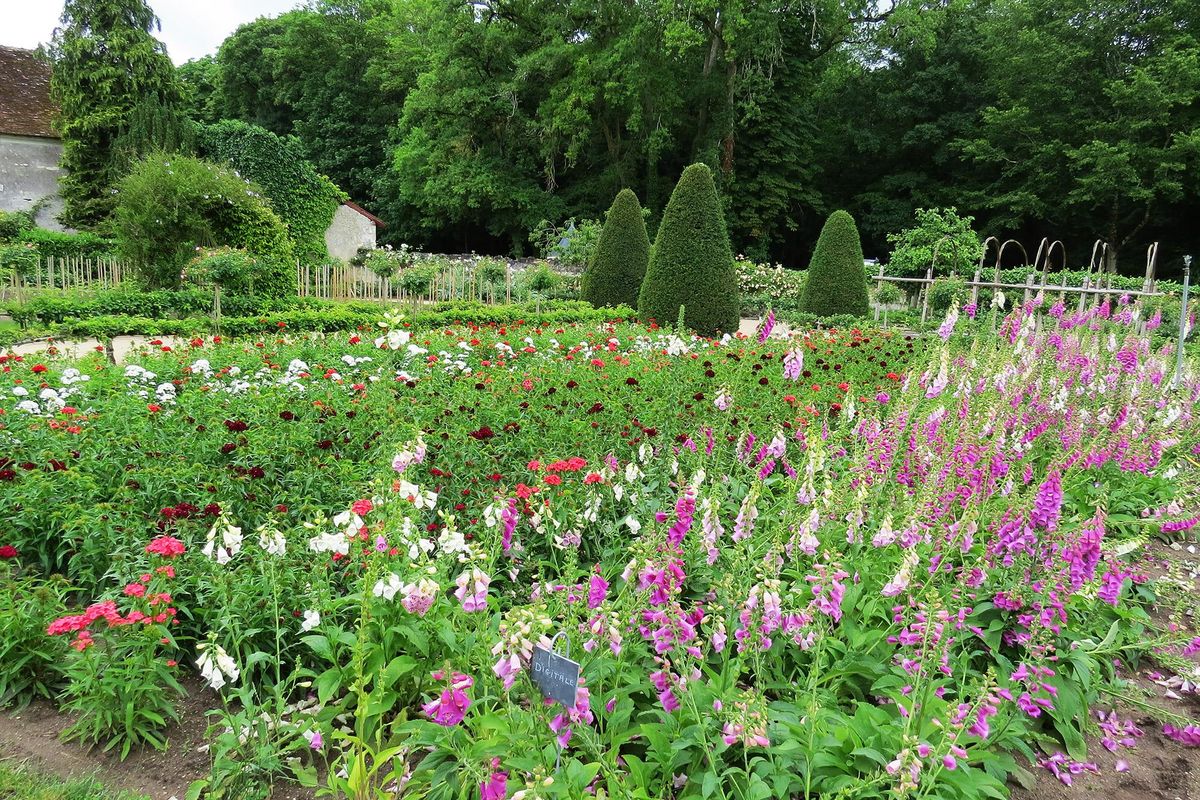In the Garden: Loire Valley chateau exudes elegance inside and out

If I had to choose one word to sum up the Loire Valley’s Chateau de Chenonceau, it would be “elegant.”
In June, I led a tour of France’s most beautiful gardens and chateaus. Of all of the places we visited, it’s fair to say Chenonceau was a favorite of the 24 travelers who joined me. This was my third visit to this remarkable chateau and garden, and it is just as lovely as I remembered.
Despite its elegance, Chenonceau has a rather interesting history. It dates back to the 1100s, although the Tower of Marques is the only remaining portion of the building from that time period. The chateau visitors see today was built in the 1500s.
King Henry II received Chenonceau through a debt repayment by one of his subjects. He gave the chateau to his mistress, Diane de Poitiers. In 1559, the king died after an unfortunate fencing accident. His widow, Catherine de Medici, then reclaimed Chenonceau and sent the mistress packing to another property, Chateau de Chaumont. As we later learned during a visit to Chaumont, it really wasn’t such a bad place to live, so all’s well that ends well.
Chateau de Chenonceau has a magnificent setting as it spans the river Cher. Visitors are allowed to explore many of the rooms inside the chateau. As gardeners, we loved the gorgeous floral arrangements in each room, which had been made from flowers and even vegetables grown onsite. We probably took more photos of them than of the actual furnishings in the rooms.
The arrangements are created by the talented artisans in the floral workshop. They used combinations of materials none of us had imagined: alliums, peonies, garlic scapes, deep purple orchid blossoms, artichokes, ornamental grasses, succulents, asparagus ferns, hydrangeas and eucalyptus leaves (the only plant material among the group).
While we strolled through the gardens, I’m sure many of us let our minds wander back to the days when Diane de Poitiers or Catherine de Medici walked those same paths. Each of these ladies had significant impacts on the gardens.
During her time at Chenonceau, de Poitiers designed the Renaissance-style garden. It is referred to as a floating parterre, built high enough so it wouldn’t be flooded by the river. The parterre is divided into eight triangles planted with lawn. Within the grass, low-growing santolina (aka lavender cotton) is planted in intricate patterns, creating a tapestry-like effect. The borders are planted with boxwoods, laurel and yews, and there is a fountain at the center.
As you might guess, de Medici’s garden is in the Italianate style and has a very refined appearance. It offers a wonderful view of the castle and features pathways lined by lawn and long beds accented by pink standard roses.
Within the flower beds, we saw interesting combinations of plants that had green, gray or black foliage and white flowers. Examples include black sweet potato vine, wax begonias with deep burgundy leaves, dusty miller, euphorbia Diamond Frost, black-leaved ornamental peppers, black petunias and white dahlias. Somehow it all worked.
The flower and vegetable gardens were fun to explore, with their precisely spaced plantings surrounded by perfectly pruned espaliered fruit trees.
Chateau de Chenonceau is a UNESCO World Heritage Site. Other features include a 16th century farm, the garden green, a maze of 2,000 yews, restaurants and a wine cellar.
To see more of Chenonceau, including the beautiful floral arrangements we saw, watch this week’s “Everyone Can Grow a Garden” video on youtube.com/c/susansinthegarden.
Susan Mulvihill is co-author, with Pat Munts, of “Northwest Gardener’s Handbook.” Contact her at susan@susansinthegarden.com.